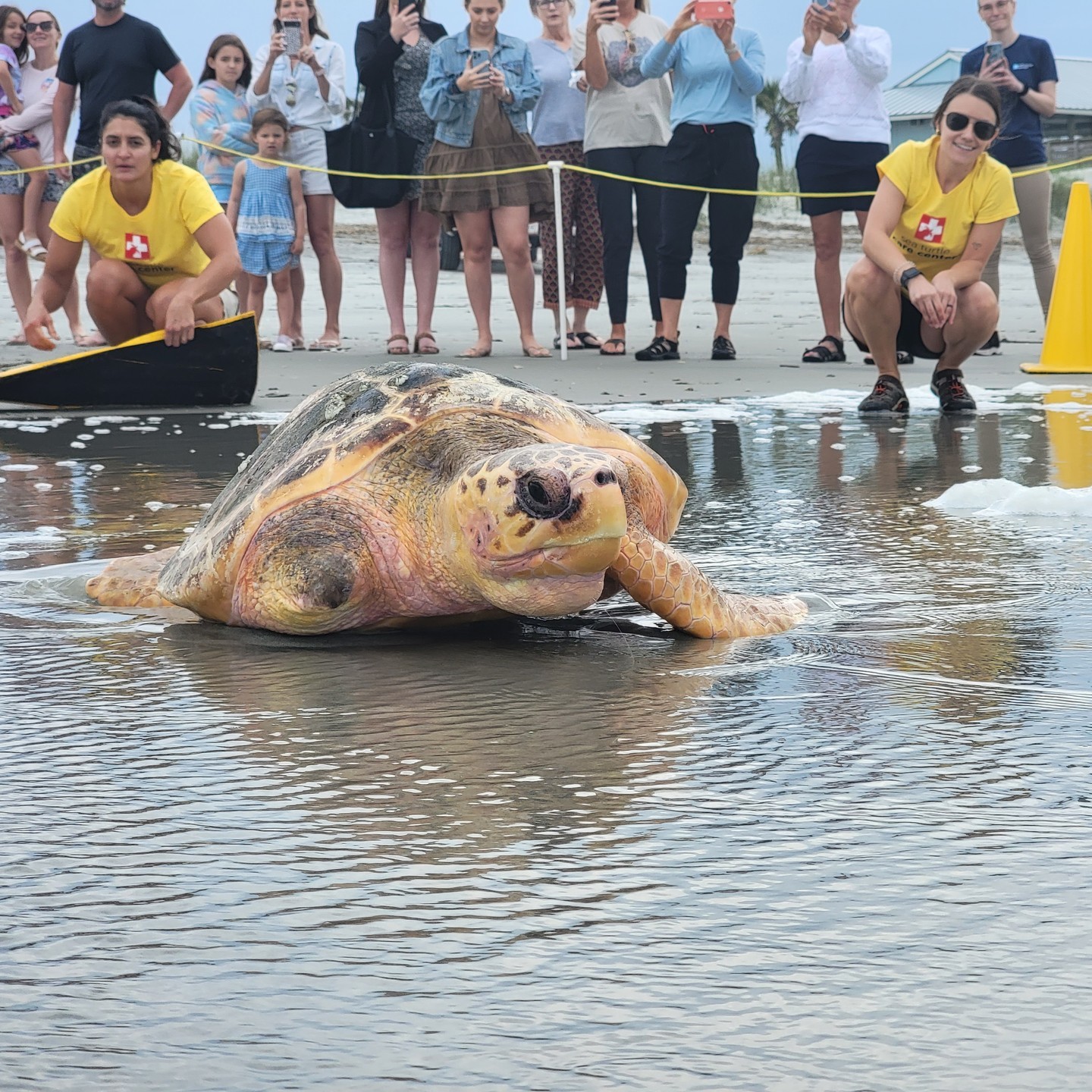- The significance of sea turtle conservation and the role of public involvement.
- Ecological and biological characteristics of loggerhead sea turtles.
- The impact of beach renourishment on coastal ecosystems and wildlife.
- Understanding Folly Beach County Park’s parking and beach access regulations.
- Strategies for fostering sustainable wildlife tourism and community engagement.
Sea turtle releases are pivotal for wildlife conservationists, researchers, and enthusiasts. Events like the release of rehabilitated loggerhead sea turtles, Brie and Gruyere, at Folly Beach County Park underscore the dedication and effort invested in preserving vulnerable species. The public’s participation is a testament to the community’s shared responsibility in safeguarding our wildlife.
Conservation efforts are critical to the survival of species like loggerhead sea turtles. The loggerhead sea turtle, scientifically named Caretta caretta, is known for its large head and hard shell. These reptiles travel vast distances across the ocean, playing an essential role in maintaining the health of marine ecosystems. They contribute to nutrient cycling and provide habitat for other organisms by transporting epibiotics on their shells. However, these migratory patterns also expose them to risks like entanglement, habitat loss, and pollution.
The rehabilitation and subsequent release of sea turtles serve as a beacon of hope for the species. Rehabilitation involves specialized veterinary care, attention to diet, and sometimes surgery to repair injuries incurred in the wild. Upon recovery, sea turtles are returned to their natural habitat, often in celebratory fashion, to continue their role in the marine environment. Such releases are vital, as they return healthy individuals to the wild and raise awareness about conservation issues.
Regarding environmental impact, beach renourishment projects, like the one at Folly Beach, can have complicated effects on coastal ecosystems. These projects involve replenishing sand to eroding beaches, which is critical for protecting coastal infrastructure and maintaining beach aesthetics. However, they must be managed carefully to minimize disruption to wildlife habitats. Loggerhead sea turtles, which nest on sandy beaches, can be particularly vulnerable to changes in their nesting grounds. Project planners must exercise caution and implement measures to protect nests and ensure safe passage for hatchlings to the sea.
Visitors to Folly Beach County Park, drawn by the allure of witnessing a sea turtle release, must become familiar with the area’s parking and beach access regulations. The introduction of a standard parking fee, the acceptance of passes, and parking space limitations are facets visitors should plan for in advance. With a set capacity, maximizing available space through strategies like carpooling becomes a logical approach. Attendees should also heed the advised caution due to ongoing renourishment activities and must observe restrictions designed to protect the turtles and the event’s integrity.
The nexus between wildlife conservation and community involvement is evident in these releases. Sustainable wildlife tourism, such as sea turtle releases, allows the community to actively engage in environmental stewardship. By respecting the boundaries set for viewing lanes and refraining from entering the water during releases, the public plays an active role in the success of these events. Additionally, by choosing to follow the live stream, individuals unable to attend in person can avoid contributing to over-crowdedness, reducing the potential impact on the park and its fauna.
Beyond the moment of release, ongoing education and involvement are paramount. Informational campaigns on social media platforms, educational programs, and volunteering opportunities with conservation projects encourage public participation while enhancing the broader understanding of the challenges faced by sea turtles. Community-driven regulation enforcement, along with personal decision-making that favors eco-friendly practices, such as avoiding single-use plastics that can end up in oceans, further supports conservation efforts.
The sea turtle release at Folly Beach County Park is more than an isolated event; it vividly illustrates a community’s commitment to wildlife conservation. It brings together individuals from various backgrounds, united by a mutual interest in preserving the natural world for future generations. By understanding the event’s significance, respecting the guidelines set forth by park management, and embracing sustainable practices, each person contributes to the enduring tale of ecological stewardship. As the park anticipates a full parking lot and an enthusiastic crowd, this serves as a reminder that our collective efforts can yield monumental outcomes for the conservation of species like the loggerhead sea turtle.
*****
Source Description
UPDATE: Folly Beach County Park’s parking lot is full. Please follow Folly Beach public parking regulations if you are looking for a spot to park for the release!
🚨 Exciting News 🚨
Today, (Wednesday, May 22) we are hosting a public sea turtle release at Folly Beach County Park at 2 p.m.! Join us as we release two rehabilitated loggerhead sea turtles — Brie and Gruyere — back into the big blue.
Sea turtle releases are celebratory occasions, and we understand the excitement that surrounds this event! For the best experience, please review this release information:
– There will be a standard parking rate of $15 per car at Folly Beach County Park; reciprocity and Gold Passes will be accepted.
– Folly Beach is undergoing a renourishment project which may present some obstacles on the beach; exercise caution and use the provided walkovers.
– Parking space is limited; carpooling and arriving early is highly recommended to allow plenty of time to secure your viewing spot.
– Respect viewing lane boundaries and do not enter the water during the release.
Can’t make it? Be sure to follow us on Facebook to tune into the livestream!
.
.
.
All sea turtle conservation work is authorized by the SC Department of Natural Resources Marine Turtle Permit No. 2024-0004.

